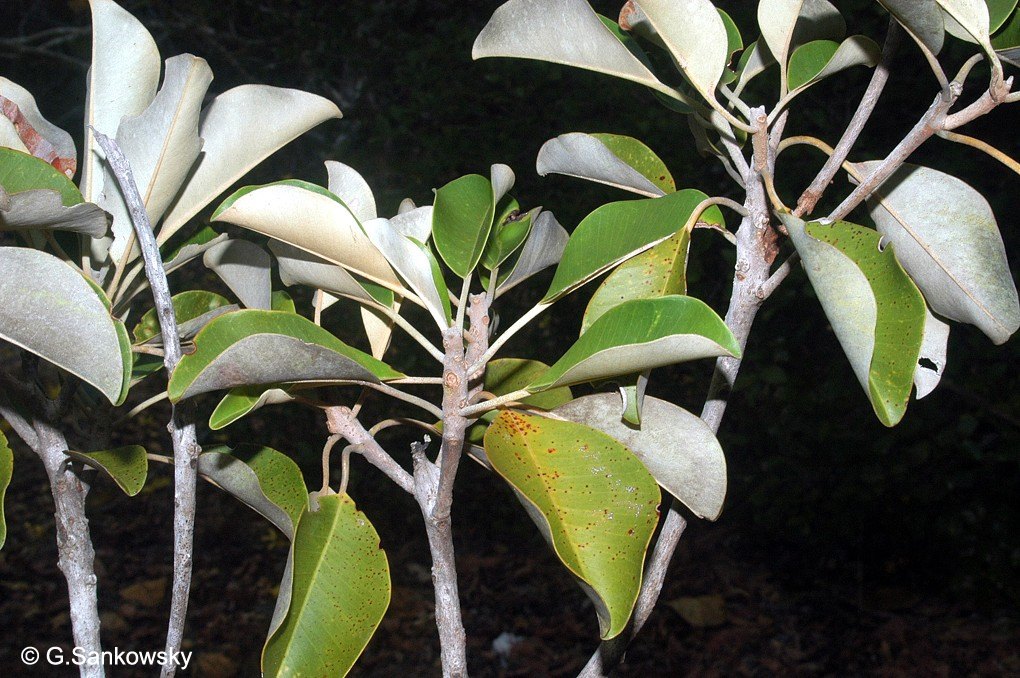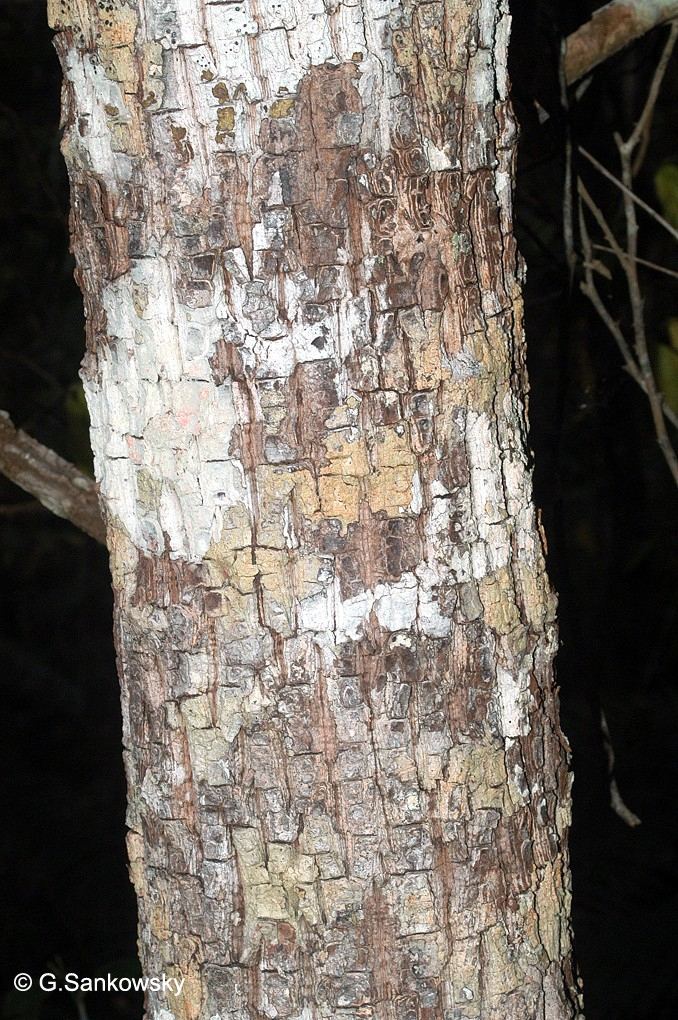Australian Tropical Rainforest Plants - Online edition
Manilkara kauki (L.) Dubard






Dubard, M.M.M. (1915) Annales du Musee Coloniale de Marseille ser. 3 3: 9.
Khirni; Palai; Talawrinta
Grows into a large though often short-boled tree.
Leaf blades about 6.5-12.5 x 4-6 cm, petioles about 1-3 cm long, grooved on the upper surface. Petioles and twigs produce a milky exudate when cut or broken. Lateral veins about 10-12 on each side of the midrib, anastomosing just inside the blade margin +/- forming an intramarginal vein.
Flowers borne on pedicels, about 10-20 mm long, in the leaf axils on the twigs among the leaves. Sepals about 3-4 x 2.5-3 mm, outer surface clothed in short brown hairs. Corolla united at the base but with six distinct lobes at the apex. Lobes about 1.5-2 x 0.5-1 mm each with two appendages of similar size and shape to the corolla lobes. Stamens six, attached to the corolla. Anther filaments about 1.5 mm long, anthers triangular, about 1.5 x 0.5 mm. Staminodes six, alternating with the stamens. Ovary borne on a raised disk. Style glabrous, about 1 mm long.
Cotyledons obovate to orbicular, about 22-35 x 19-21 mm, 3-5-veined at the base, margins slightly recurved. Underside clothed in small glands. Petioles about 3-4 mm long. First pair of leaves about 25-40 x 14-21 mm, petioles about 2-4 mm long. At the tenth leaf stage: all plant parts produce a milky exudate when cut or broken. Leaf blade about 40 x 14 mm, petiole about 5 mm long, grooved on the upper surface. Lateral veins about 13-15 on each side of the midrib. Terminal bud and stem clothed in scales. Seed germination time 32 to 88 days.
Occurs in CYP and NEQ. Altitudinal range quite small, usually found just above sea level. Grows on beaches in open forest, monsoon forest, vine thickets and rain forest. Also occurs in Asia and Malesia.
The timber of this very strong tree that usually grows in beach scrubs was once sought after for carving.
It produces edible fruit. This species may have medicinal properties.





